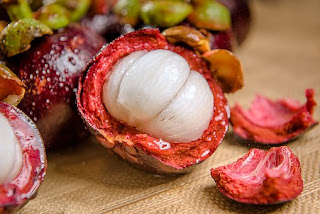Common Names: black snakeroot, bugbane, bugwort, macrotys, rattleroot, rattleweed
Description:
Black cohosh is a wild plant native to North America and is related to the buttercup family,
peony and larkspur.
The fresh or dried roots and underground stems are commonly used to treat a wide range of
ailments like rheumatism, arthritis and muscle pain. It is also a traditional remedy for
menstrual irregularities, premenstrual syndrome and gynecological conditions like menopausal
symptoms (hot flashes, palpitations, night sweats, vaginal dryness, and other symptoms that can
occur during menopause). The stems and roots of the black cohosh are made into strong infusions
(teas), capsules, solid extracts used in pills, or tinctures (liquid extracts).
Parts used: roots and underground stems
Medicinal properties:
Black cohosh contains aromatic acids, salicylic acid (anti-inflammatory), isoflavones,
formononetin, triterpene glycosides, acetin and 27 deox yactein, tannins, resins and fatty acids
Controls the symptoms of menopause:
Headaches
Hot flashes
Mood changes
Sleep problems
Heart palpitations
Night sweats
Vaginal dryness
Ease PMS symptoms, menstrual cramps, uterine and ovarian pains
Induce labor
Relieve arthritis pain
Lowers blood pressure - components in black cohost can dilate peripheral blood vessels and lowers
blood pressure.
Antispasmodic to muscles, nerves, and blood vessels
Anti-inflammatory
Black cohosh is an emmenagogue which is an agent that promotes menstrual or uterine bleeding.
Counterindication and Side effects:
Side effects from black cohosh which occur in high doses include:
Upset stomach
Headaches
Prolonged use may cause liver disorder
Counterindicated in the ff:
Pregnant women unless used to induce labor
Women with Endometriosis
Women with Breast cancer
Women with Uterine cancer
Children under 18
People with liver disease
People with high risk of stroke or blood clots
People with seizure disorders
People allergic to aspirin
Black cohosh is different for blue cohost(Caulophyllum thalictroides) and the 2 should not be
confused.
Disclaimer:
THOUGH THE CONTENT OF THIS BLOG HAD BEEN TRIED/TESTED AND HAD BEEN USED
AS FOLK/HERBAL MEDICINE IT IS STILL BEST TO CONSULT YOUR DOCTOR BEFORE
TRYING THIS AND AVOID SELF-DIAGNOSIS AND SELF-MEDICATION.







